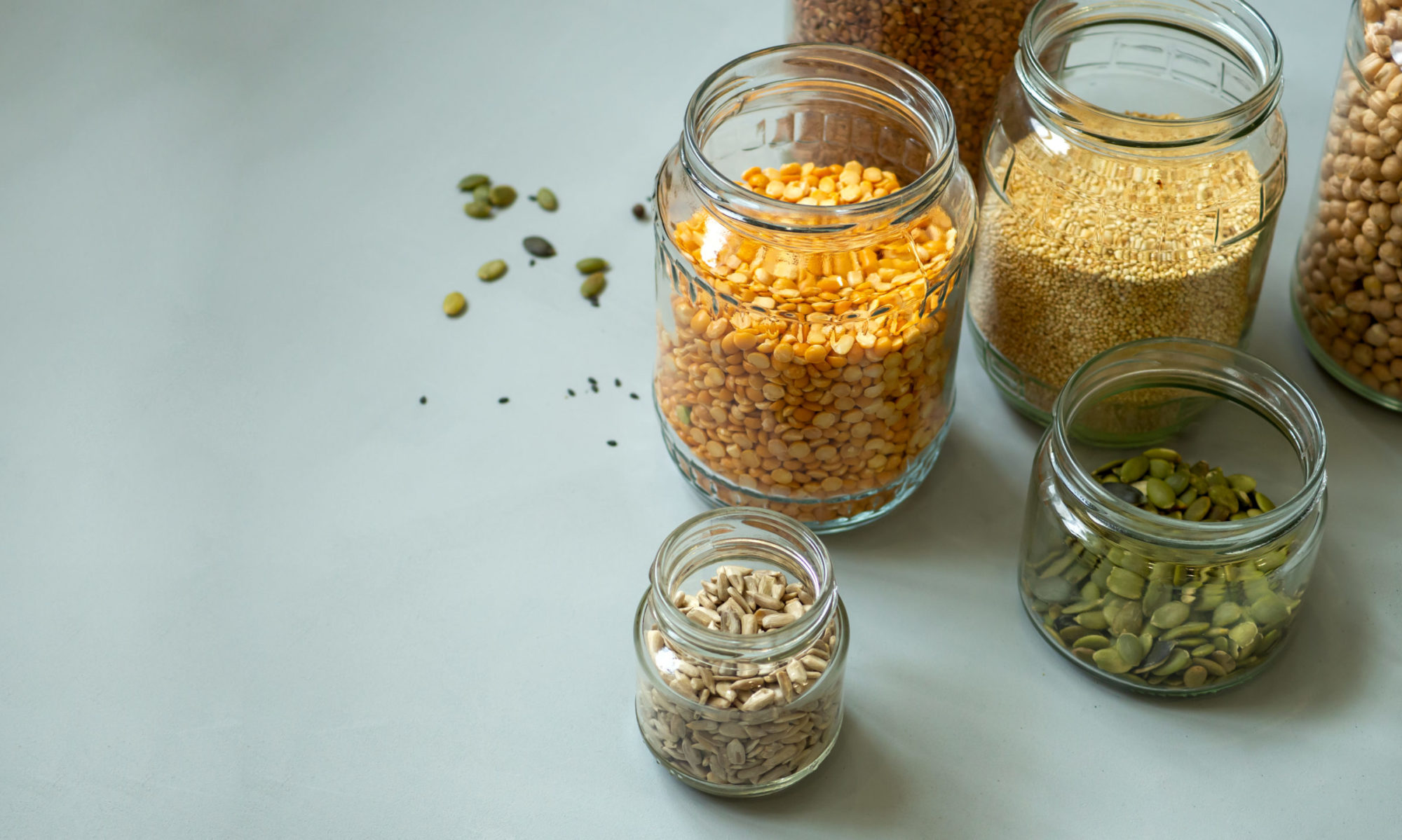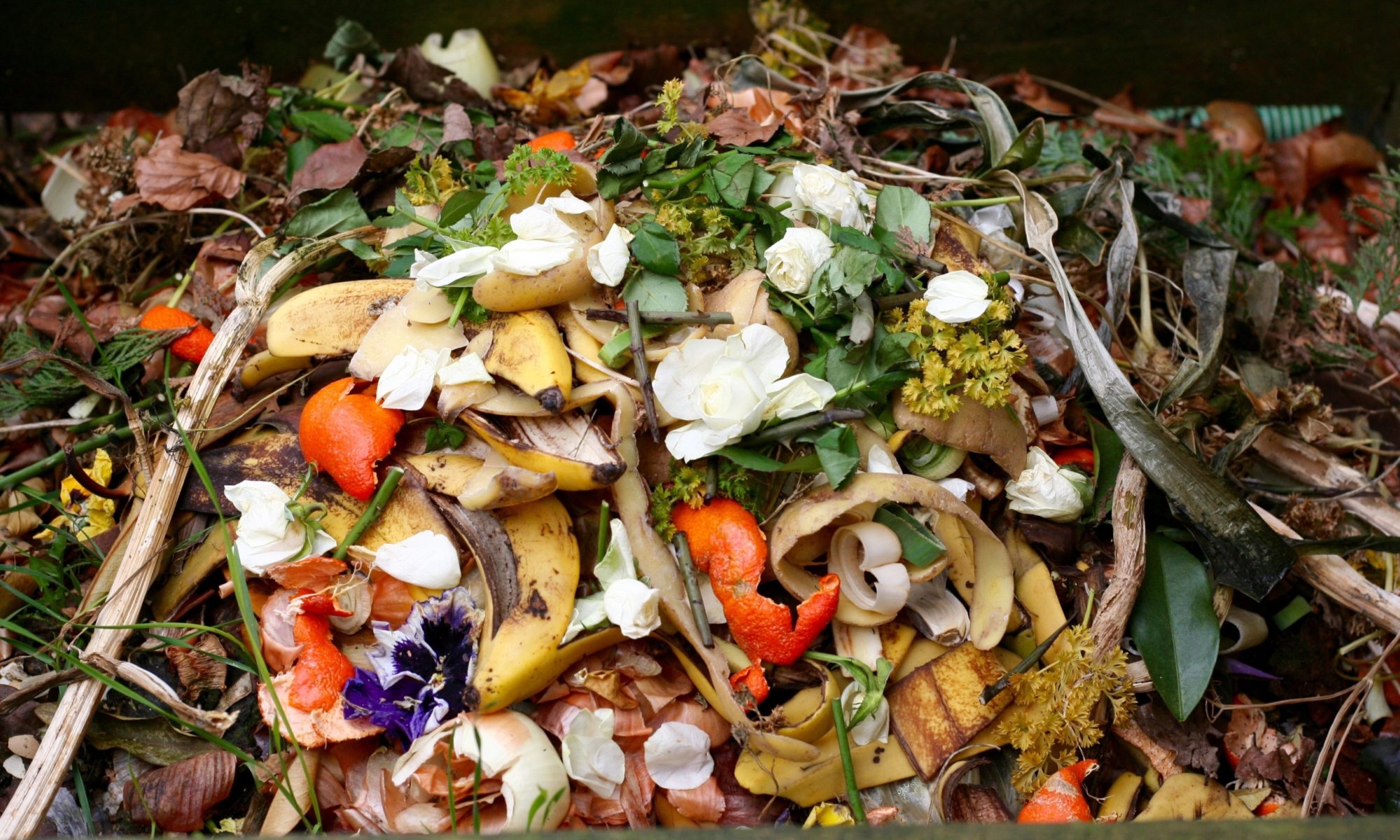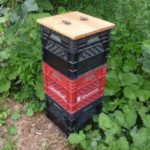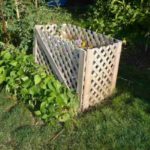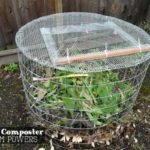I’ll be honest, I love to talk about compost. But while I could sit on this soapbox all day, I’m going to try and keep this brief and to the point so you can get the maximum knowledge in the least amount of time.
But before I dive into composting I want to make one note:
Composting food scraps shouldn’t be your first resort for dealing with food waste. The first step is prevention, and that means taking these steps before you compost when possible:
-
- Learn to properly store the food you buy.
- Donate excess food to others in need.
- Offer food scraps to animals.
- Turn it into biofuel or donate to a biofuel project (this one is more difficult for the average person).
- THEN compost what’s left.
- Landfill as a last resort.
- Learn to properly store the food you buy.
(Source: EPA’s Food Recovery Hierarchy)
Why Composting is More Sustainable than the Landfill
I know, it’s sort of counterintuitive — I mean, the landfill is just putting things underground and letting them decompose, right? … Unfortunately not, my friend.
I won’t get too into the nitty gritty but basically, when food undergoes natural decomposition it is exposed to plenty of air, specifically oxygen. This aerobic process produces very little greenhouse gasses.
When food waste goes into the landfill, it gets completely covered by other unnatural materials and eventually the conditions lead to anaerobic (meaning without oxygen) conditions. When the food decomposes anaerobically, it produces a ton of methane, one of the most destructive greenhouse gasses.
Composting our food waste is one collective action we can (and should!) take to curb climate change.
Sidenote: I present to you my favorite TikTok on food waste:
**spicy language warning**
The Benefits of Composting
Composting doesn’t just reduce methane emissions. As a zero waste principle, it “closes the loop” on leftover organic waste and creates a valuable resource: fertile dirt. Using compost for agriculture improves the soil, provides nutrients, increases water retention, and can actually eliminate the need for industrial fertilizers that are often laden with chemicals.
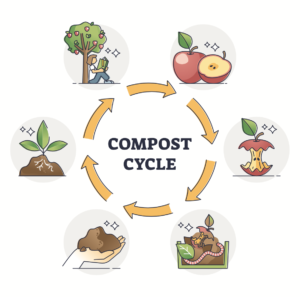
After fertilizing with compost, farmers produce higher yields of crop, reduce their operating costs, and significantly lower their carbon footprint.
Okay I’m done bragging on composting, let’s get to the good stuff.
How to Start Composting
Similar to starting a garden, the key here is planning. Consider how many food scraps your household typically produces in a week and what sort of resources you have on hand. There are several different ways to go about composting, depending on your circumstances, resources, and lifestyle.
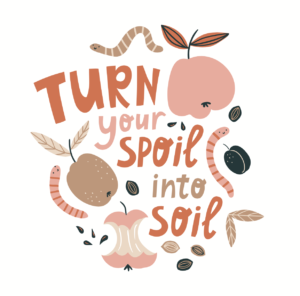
Composting in your backyard
This is what most people think of when I talk about composting — but if you don’t have a backyard, or simply don’t want a heap of compost in your yard, don’t despair! Scroll on down for less intensive solutions.
When setting up a backyard compost, consider the following factors:
-
- Light: This comes down to getting your compost at the right level of moisture and temperature. If you live in the north, you may want to put your compost in full sun to get more warmth and speed up decomposition. If you live in the south, you might consider the shade so it doesn’t dry out too much.
- Location: You want your compost to be close enough that it’s not too much of a task to make the trek from the kitchen. But also not too close to outdoor areas where you spend a lot of time in case it smells. It can also be helpful to have a source of water nearby in case your compost gets too dry. And keep in mind if you put it up against a wall it is likely to cause discoloration and potentially mold growth.
- Access: Also keep in mind it might attract critters from your nearby woods. Consider if you have dogs that might poke around in there. You can build or buy composts that keep animals out but it’s more complicated, so just be sure to take that into consideration. (If you’re keeping animals out, look into making a Compost Tumbler, which can be made cheaply with thrifted or second hand materials).
- Cost: You can build a compost yourself out of wood, but also less traditional materials like an old trash can, busted tote, wine barrel… or you can just start a pile without any structure whatsoever! It’s totally up to you and your preferences.
23 Ingenious DIY Compost Bin Ideas
Composting in an apartment or condo
If you don’t have a backyard, there are still options! You can create a compost in a 5-gallon bucket. It’s recommended to use vermiculture (worms!) if you want to maintain a smaller closed compost like this. Loop Closing is a great resource to get started on this.
The benefits of worm castings (compost made from worms) is even better than the benefits from “regular” compost, so if you can incorporate worms – DO IT!
You can also buy countertop compost devices now, though I will warn you they are expensive and I have never tried them.
Composting in your community
If you generally don’t have the time or energy to create your own compost, look into your local options! Community gardens often have a compost, and many cities now have compost facilities that offer free drop off or scheduled pick-ups for a very reasonable price. (If you’re in Gainesville, check out Beaten Path Compost — it’s $15/month for weekly curbside pick-up!)
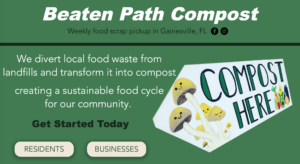
Whether it’s a community garden or local flower farm, I promise there’s someone out there who will happily take your compost!
By the way, if you’re worried about the smell or pests in your kitchen, try storing food scraps in the freezer until you’re ready to take them out to the compost (or put it out on the curb).
What to Put in Your Compost
Ok, before we get into it the truth is, all you REALLY need for rich, wonderful compost for your entire garden is…. (drum roll please)… shredded leaves.
Mike McGrath from You Bet Your Garden explains why:
He talks about the nutritional powerhouse that are trees in our ecosystem and their gift to us each fall. Basically, you simply can’t gather too many leaves in the fall (even suggesting you could get more from neighbors who are silly enough to rake and bag). The shredding is the most important part, but most leaf blowers came with vacuum attachments and canvas bags for the mulch you’ll create.
You can use the mulch immediately if you want and/or create a compost pile with the rest. By spring, your pile will have reduced by half several times, leaving you with nutrient-rich compost. McGrath does go on to add that coffee grounds are a second “hot” ingredient that will kick start the compost pile and reduce it down even more quickly. (Not a home coffee drinker? Ask a local coffee shop for coffee grounds!)
But THIS eco-chat is in the context of composting to divert organic waste from the landfill, closing the loop and supporting sustainable, zero waste principles. To do so efficiently and effectively, you will want your compost to be a mix of “dry” (leaves, cardboard) and “wet” waste (coffee grounds, food scraps) so that it doesn’t just become a steaming puddle or a dry heap of trash. It’s best to turn the compost every few days or at least once a week to keep the additions mixed and encourage oxygen to do its job. It doesn’t have to be perfect, you’ll just play around with it until the consistency seems right.
If it’s way too wet, oxygen won’t be able to circulate and it won’t decompose properly — remember all that aerobic decomposition stuff? So the dry ingredients are just as important as the wet, but keep in mind some items like paper and cardboard will decompose a lot faster if you shred them or cut them into smaller pieces.
If it’s taking forever for your compost to decompose you might need more wet ingredients (or it’s just too cold.) If your compost is full of maggots and fly larvae you probably need more dry ingredients, but remember worms are actually great for compost!
Common wet compostables include:
- Veggie/fruit scraps
- Coffee grounds and tea leaves (natural tea bags are ok, but don’t put synthetic satchels in there)
- Egg shells
- Grass clippings, weeds, or other green plants
- Wilted flowers
Common dry compostables include:
- Leaves or pine needles from the yard
- Sticks and branches
- Paper products
- Cardboard
- Stale or moldy bread/crackers
- Natural fabrics such as cotton, linen, wool, or silk (cut into small strips to speed up decomposition)
- Dryer lint — from loads without synthetics (Psst: try wool dryer balls if you want an all-natural, compostable alternative to dryer sheets)
- Wooden toothpicks or chopsticks
- Dead houseplants (👀 it happens…)
- Human hair or pet fur (okay I know it’s getting weird, but you really can compost this stuff!)
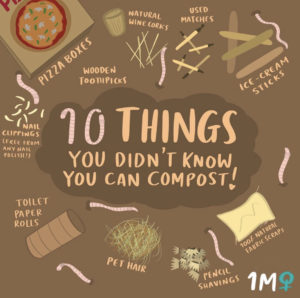
Things you shouldn’t put in your compost:
- Meat, dairy, fats, and oils — this is for sanitary reasons. If your compost is going to be used for gardening purposes you don’t want bad bacteria growing in there because it could transfer to your vegetables in the garden. Industrial composts can handle meats because they reach high enough temperatures to kill off those bacteria, but you shouldn’t put them in your backyard compost.
- Items that feel like plastic but are labeled as “compostable” by the manufacturer. Again, these can go in an industrial compost but your backyard pile won’t reach the temps necessary to break them down.
- Anything synthetic
- Diseased or pest infected plants — They’ll just live in the soil and transfer to your future plants!
- Plants or yard clippings treated with pesticides or herbicides.
- Black Walnut Tree leaves, branches or walnuts — specific, I know, but this particular tree carries a hormone that inhibits the growth of other plants, so it’s terrible for making garden compost!
- Pet waste — again, for sanitary reasons.
When Will My Compost Be Ready?
This is tricky because it depends so much on the conditions of your personal compost. The answer is anywhere from 2 months to a year. When it’s warm, it’ll go faster. In the winter (if you live up north) it may do nothing at all.
If it smells sour and looks wet, add more browns and wait a bit. If you want to speed up the process, turn your compost (meaning take a shovel and flip the contents around) every 2-4 weeks. This helps that aerobic decomposition and keeps it from being too wet at the bottom or too dry at the top.
Your finished compost will be almost fluffy in consistency, and shouldn’t have any large chunks of original material. It’s great to mix with soil for your garden, houseplants, or flower beds. Have too much? Offer it up to your local neighborhood, I’m sure there’s a gardener who will gladly take it off your hands!
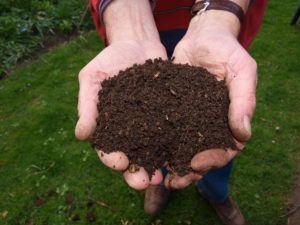
If you have questions, the EPA offers a number of resources on home composting that are a great starting guide.
